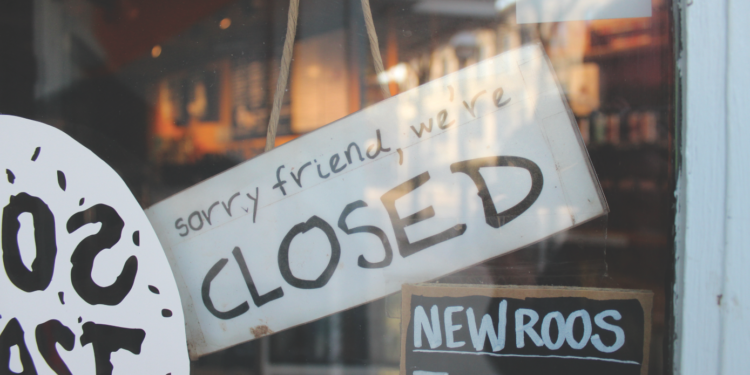In March of this year, Governor Gavin Newsom had to make the difficult decision to put into action a “stay-at-home order.” The coronavirus (COVID-19) pandemic was out of control and hospitals were overwhelmed with life-threatening cases of very ill people. Understandably, something had to be done to slow the spread. But what did this mean for small business owners?
Imagine being a small business owner, you’ve worked hard to open and maintain your business, whatever it might be. Literally on a moment’s notice, you are told to close your business doors and stay home. That means something much more involved and complicated for your business, your employees and your revenue (or lack thereof).

In a recent interview on KPBS, John Carroll spoke with Rosa Buettner, the owner of Pecs. In accordance with the March “stay-at-home” order, Pecs closed their doors for three solid months. In June, they spent more than $8,000 in necessary upgrades so they could open their doors again. That only lasted two weeks until more changes in regulations forced Pecs to close again. At that time, the latest rule was such that a bar could only stay open if they served food and had outdoor seating available. In order to open again, Pecs spent over $50,000 creating an outdoor kitchen and restaurant on a section of their property that was previously (pre-COVID-19) denied a permit for outdoor dining. It appears the city made an exception this time in granting Pecs the required permit. Rosa and Pecs’ story is one of many local business owners.
In San Diego County, an outdoor dining permit can range from $2,000-$6,000, forcing already struggling businesses to invest more money in an effort to stay open without any guarantees as the rules and regulations change almost daily in accordance with the COVID-19 case count.
The good news is San Diegans must be doing something right! We seem to have a lower percentage of COVID-19 cases in our population compared to some of California’s other counties. We’ve even had business owners from other counties visit San Diego to see how were making these things possible.
Here’s a look at San Diego County’s numbers (as of Nov. 3) compared to some other counties in California.
San Diego County –
Population (as of 2019): 3.3 million
C19 Cases: 57,000 Deaths: almost 900
Percentage of cases and deaths per population: 1.75%
Riverside County –
Population (as of 2019): 2.5 million
C19 Cases: almost 70,000 Deaths: over 1300
Percentage of cases and deaths per population: 2.8%
Los Angeles County –
Population (as of 2019): 10.4 million
C19 Cases: over 300,000 Deaths: over 7000
Percentage of cases and deaths per population: 3.07%
Sacramento County –
Population (as of 2019): 1.5 million
C19 Cases: over 27,000 Deaths: over 500
Percentage of cases and deaths per population: 1.8%
State of California –
Population (as of 2019): 39.5 million
C19 Cases: over 950,000 Deaths: almost 18,000
Percentage of cases and deaths per population: 2.5%
It’s obvious that the COVID-19 case numbers affect the rules and regulations, which affect a business’s ability to stay open. Please keep in mind, when we say phrases like “support small business” and “community supporting community,” it should be emphasized now more than ever. With a clear lack of support and guidance from the federal level, each state, county and city has (for the most part) had to figure it out for themselves. Every small business owner has had to make hard decisions, sacrifices, further financial investments into their businesses, and completely change their way of operating in order to survive this year. Many have not made it and closed their doors. So, it bears repeating: Please support small businesses in our community, we all need each other to make it through these difficult times. Keep up the good work, San Diego — wash your hands regularly, social distance and, of course, always wear a face covering. The pandemic won’t last forever but we still have a responsibility to each other to do our part and keep our case numbers down.









